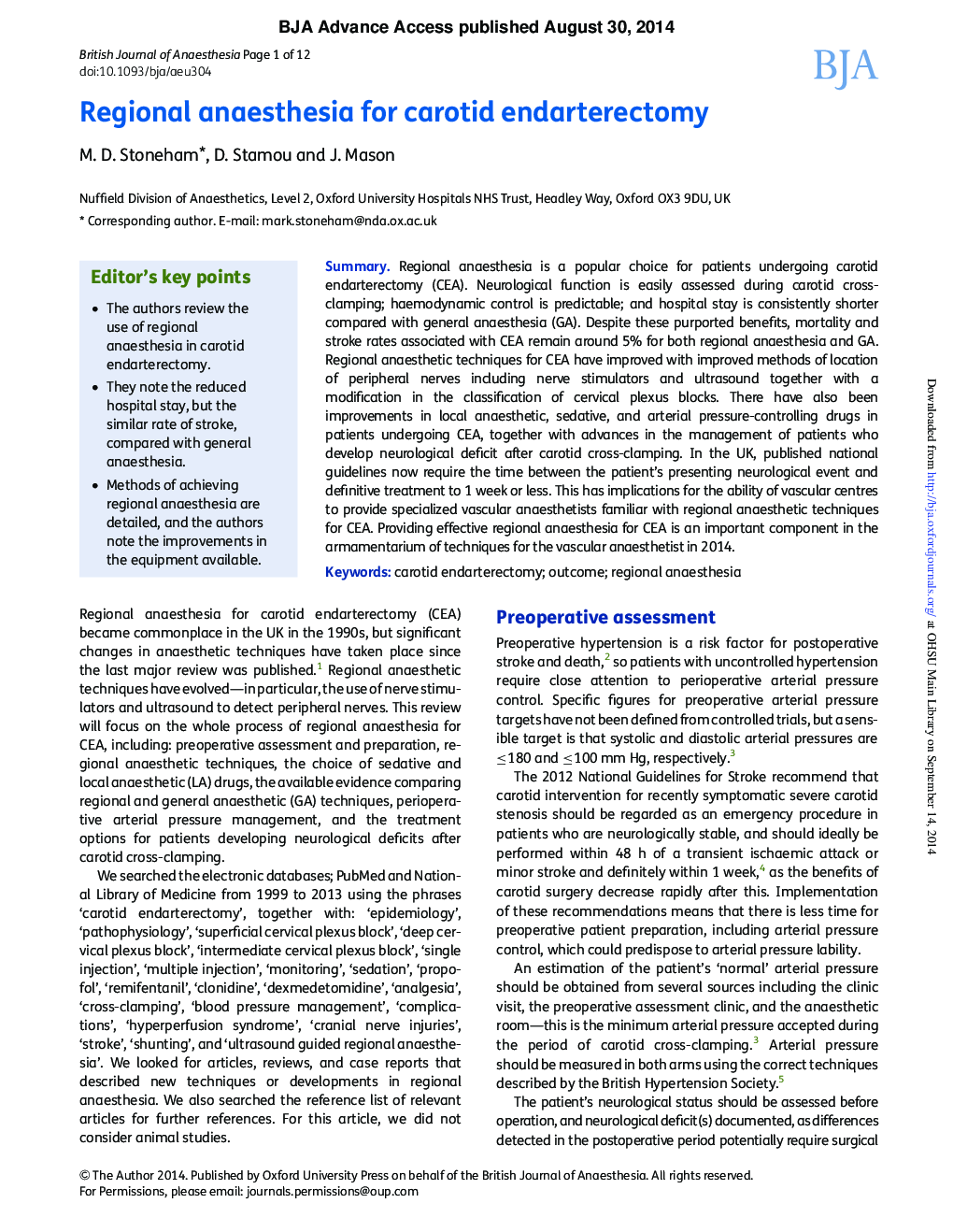| Article ID | Journal | Published Year | Pages | File Type |
|---|---|---|---|---|
| 8932058 | British Journal of Anaesthesia | 2015 | 12 Pages |
Abstract
Regional anaesthesia is a popular choice for patients undergoing carotid endarterectomy (CEA). Neurological function is easily assessed during carotid cross-clamping; haemodynamic control is predictable; and hospital stay is consistently shorter compared with general anaesthesia (GA). Despite these purported benefits, mortality and stroke rates associated with CEA remain around 5% for both regional anaesthesia and GA. Regional anaesthetic techniques for CEA have improved with improved methods of location of peripheral nerves including nerve stimulators and ultrasound together with a modification in the classification of cervical plexus blocks. There have also been improvements in local anaesthetic, sedative, and arterial pressure-controlling drugs in patients undergoing CEA, together with advances in the management of patients who develop neurological deficit after carotid cross-clamping. In the UK, published national guidelines now require the time between the patient's presenting neurological event and definitive treatment to 1 week or less. This has implications for the ability of vascular centres to provide specialized vascular anaesthetists familiar with regional anaesthetic techniques for CEA. Providing effective regional anaesthesia for CEA is an important component in the armamentarium of techniques for the vascular anaesthetist in 2014.
Related Topics
Health Sciences
Medicine and Dentistry
Anesthesiology and Pain Medicine
Authors
M.D. Stoneham, D. Stamou, J. Mason,
